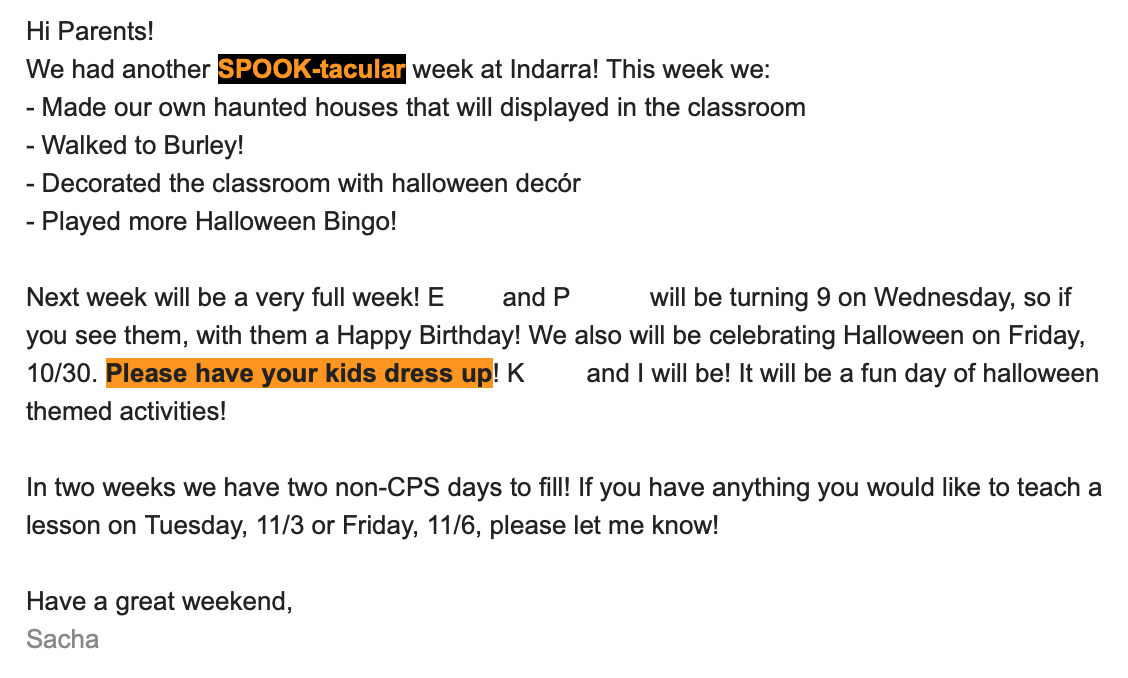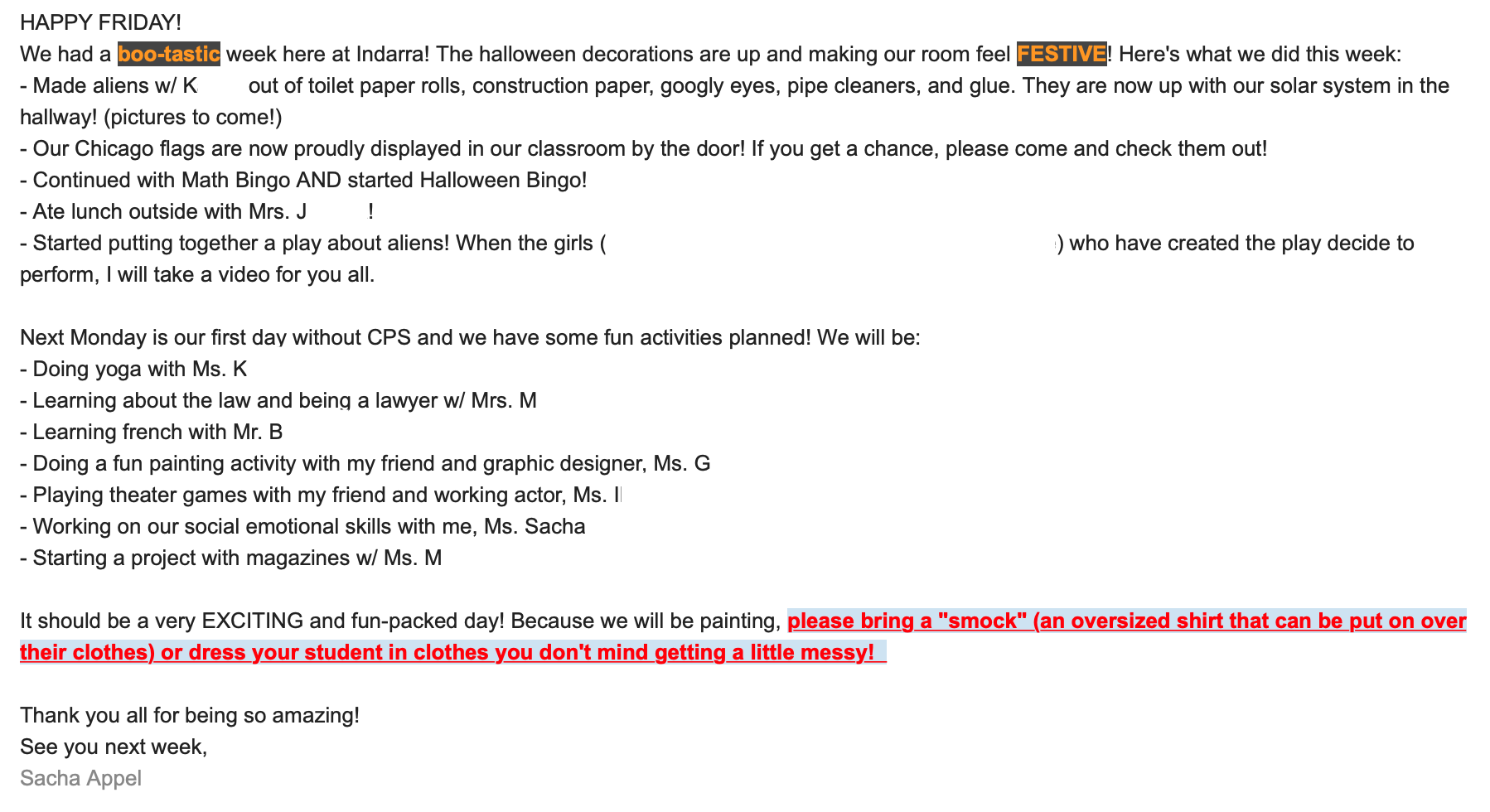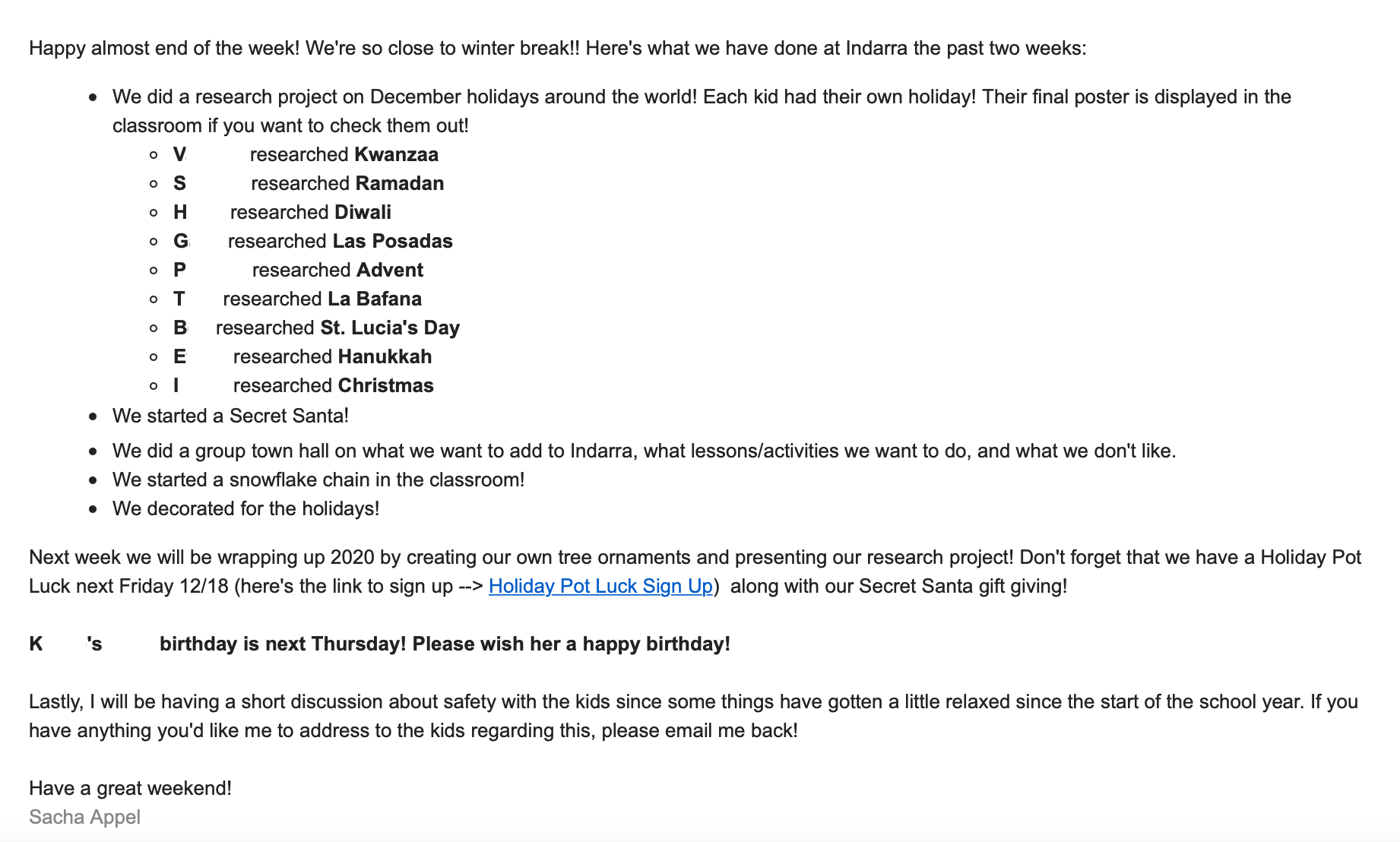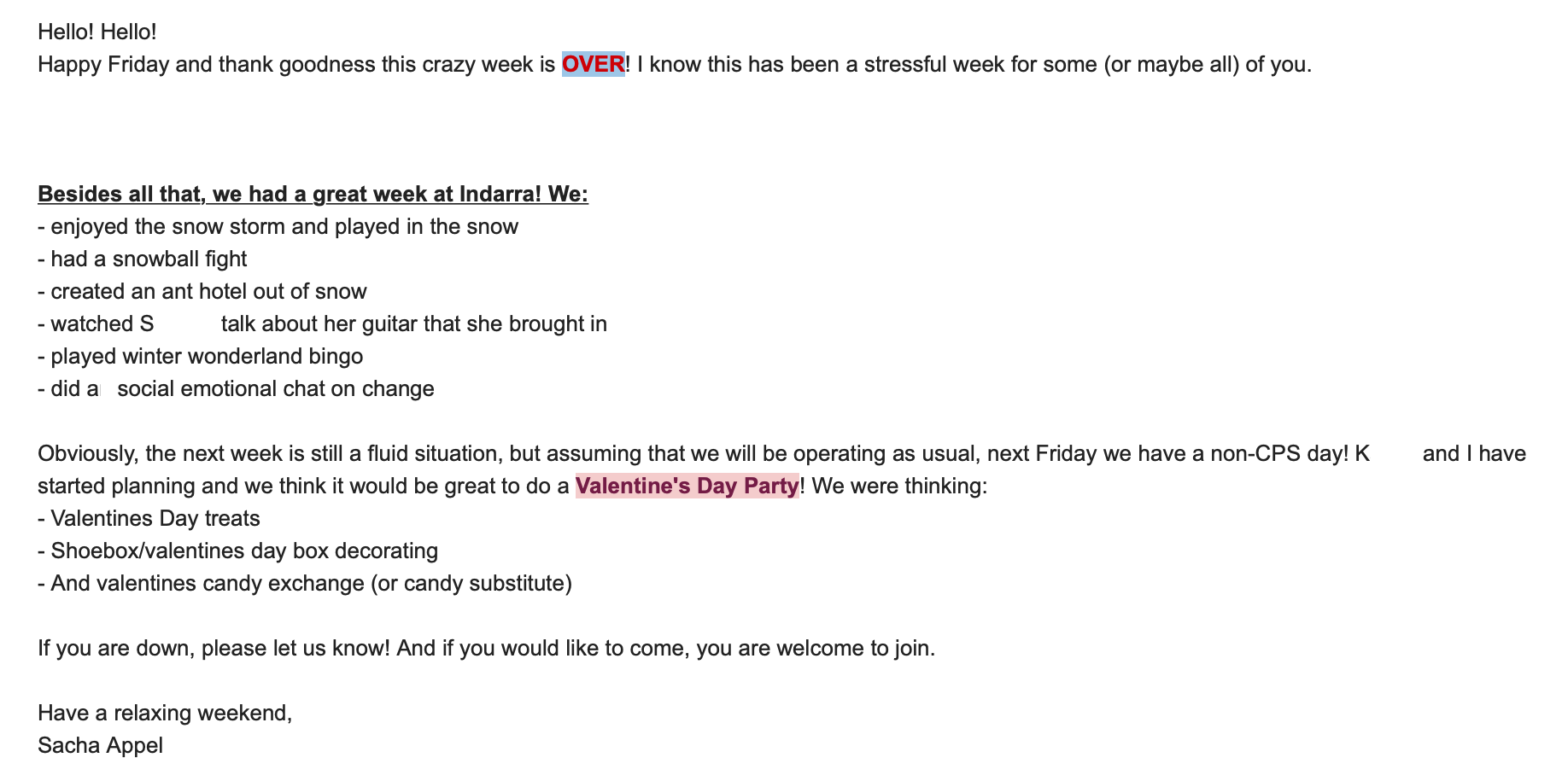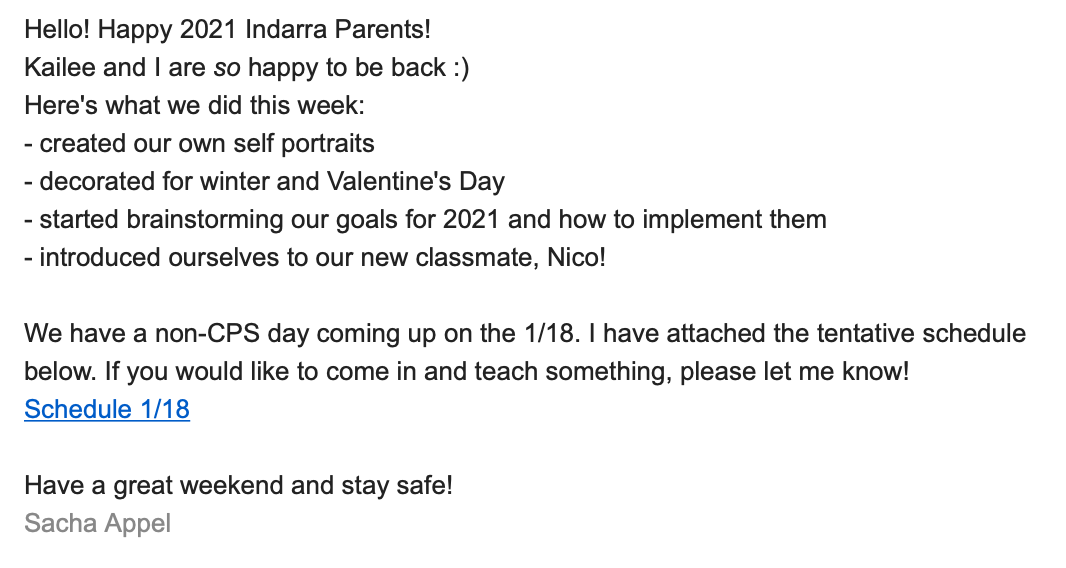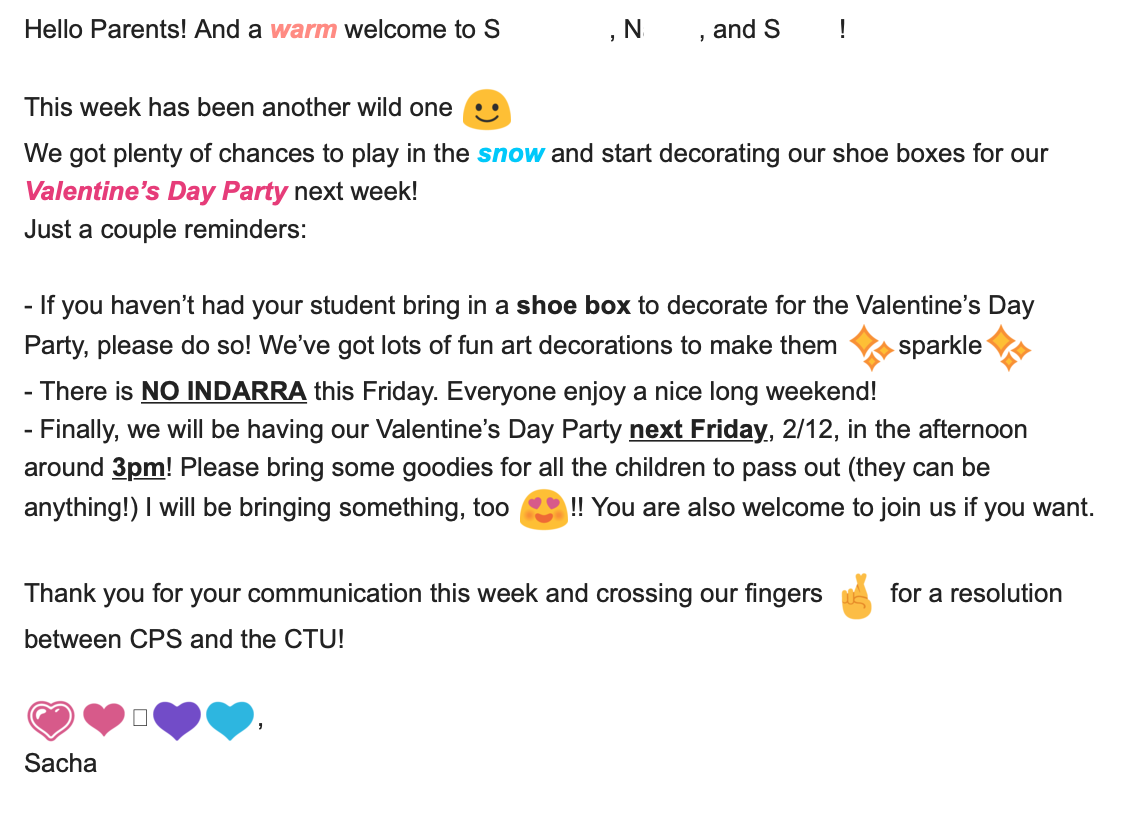Mrs. Allison Foerster

Every year, we start our science unit on plants and animals by planting our own class plants...

...students pot the plants...

...then we water the plants everyday, watching them grow!

I encourage students to bring in their own plants to show the class.

We learn about several animals' life cycles, such as a penguin's!

In the Fall, we discuss about the parts of a pumpkin...
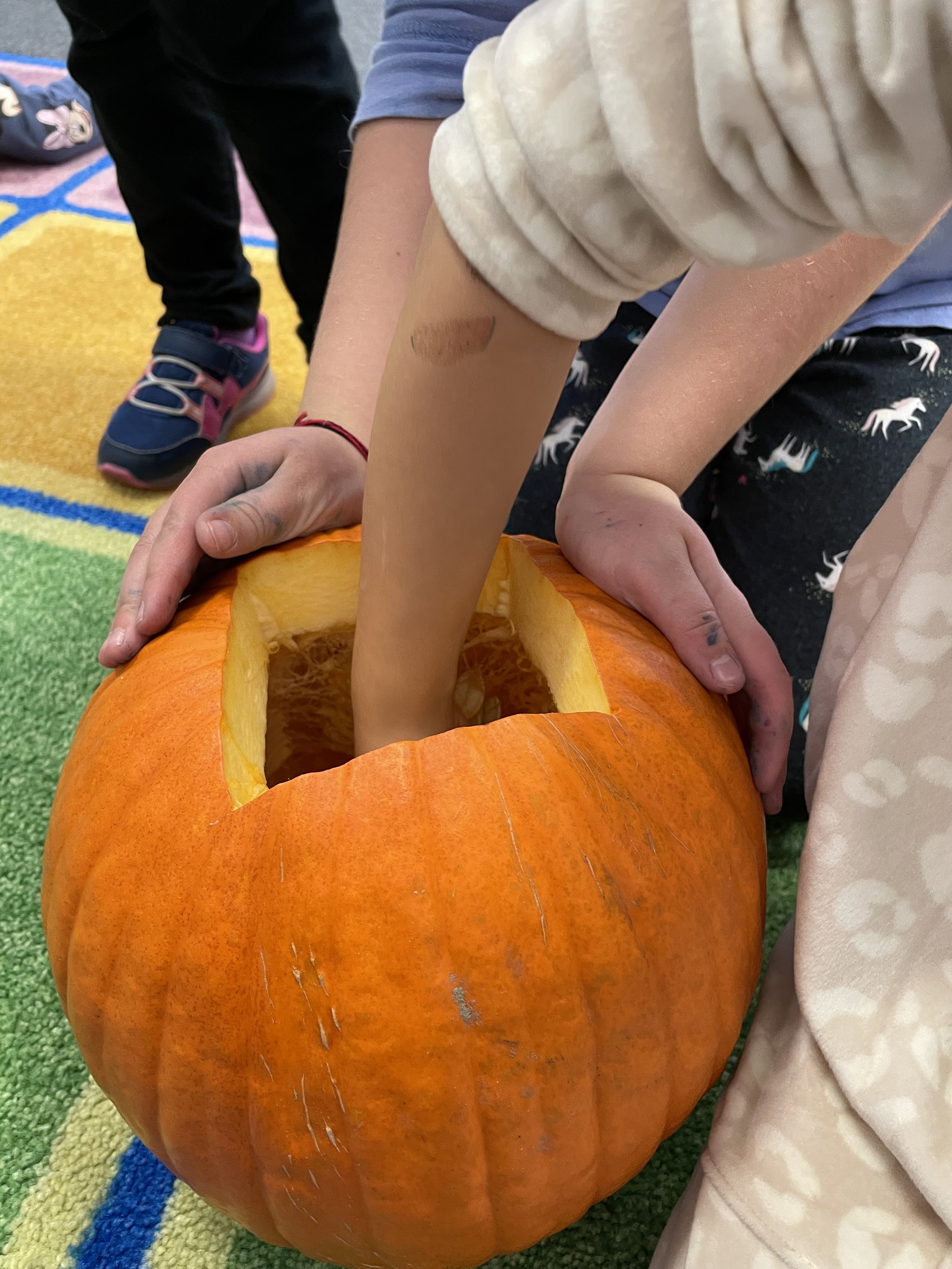
...we also get to feel the inside of a real pumpkin...
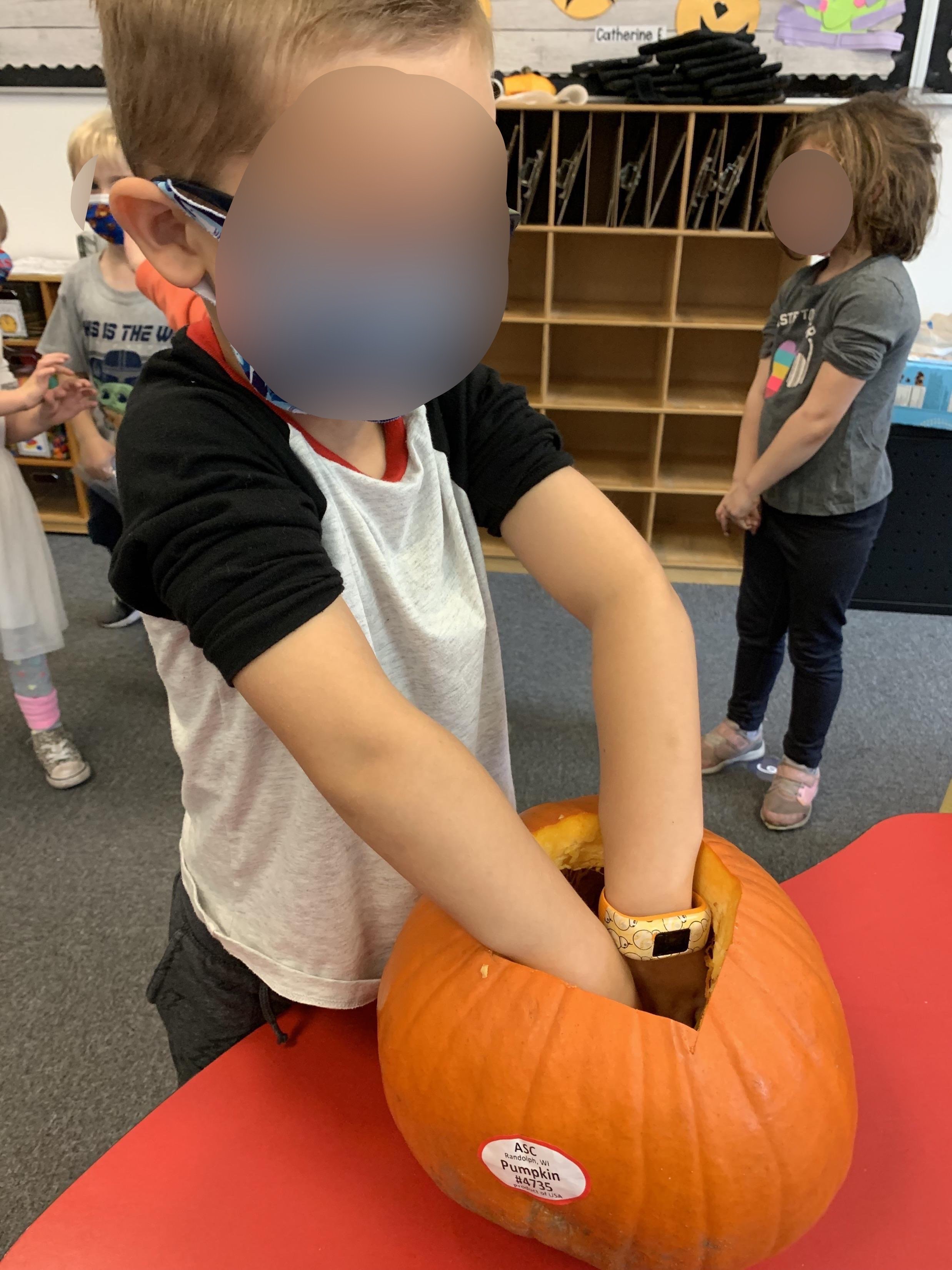
...then, students try (store bought) pumpkin seeds.
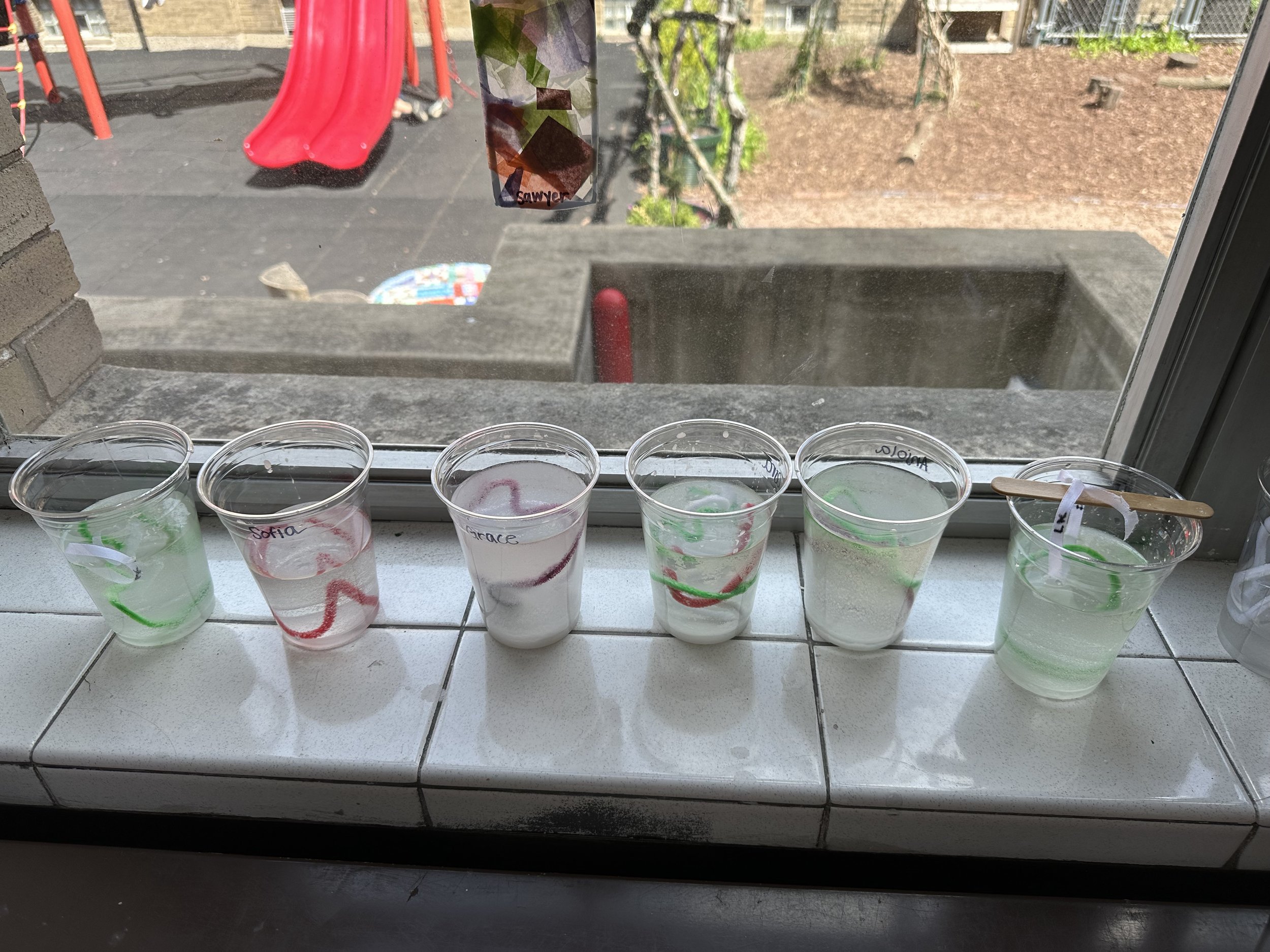
Creating crystalized pipe cleaner creations.

We made oobleck after talking about solids and liquids.
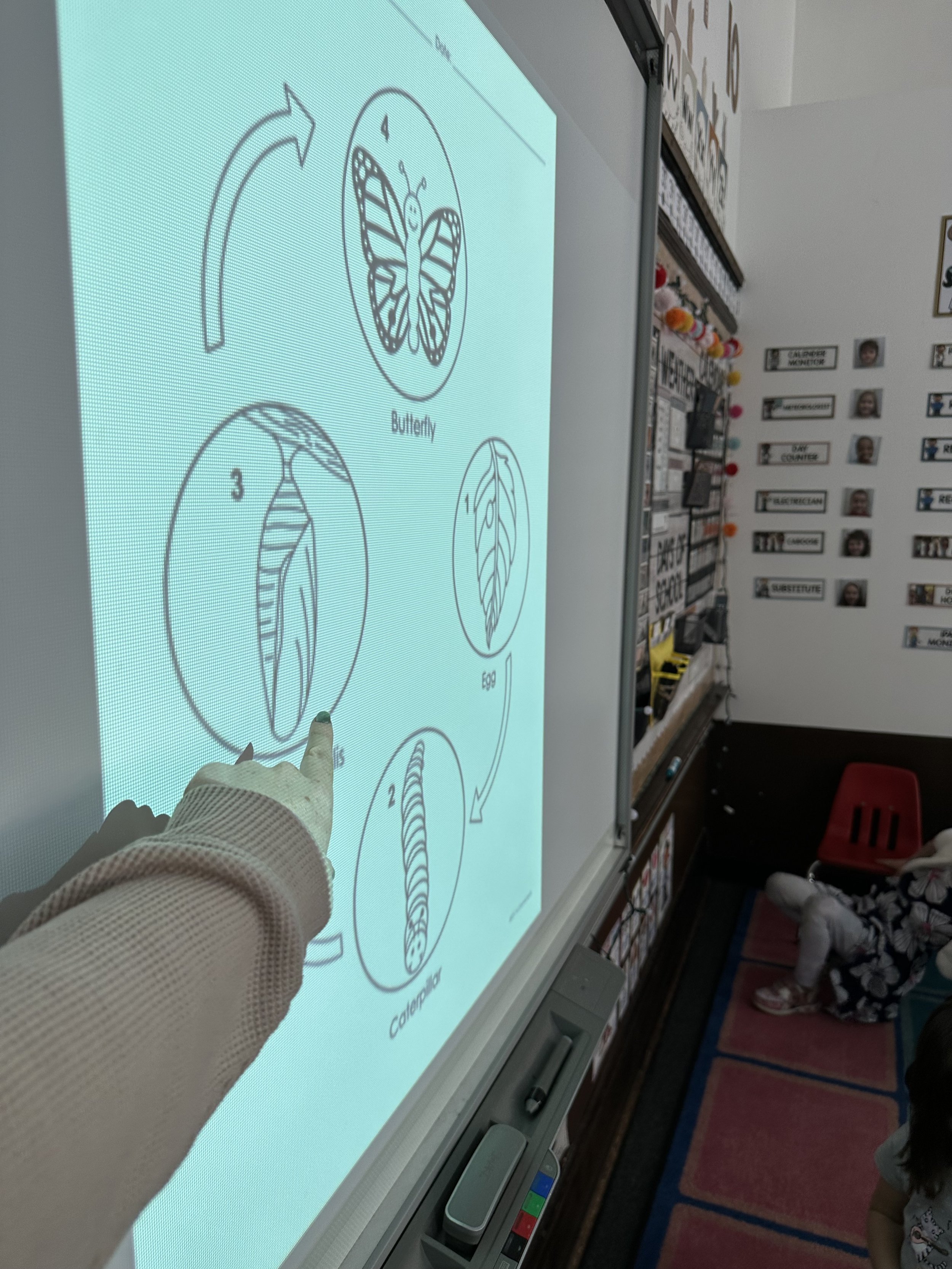
In the spring, we discuss the life cycle of a caterpillar/butterfly...

...then we raise our own! We get caterpillars...

....and watch them grow and create chrysalises...
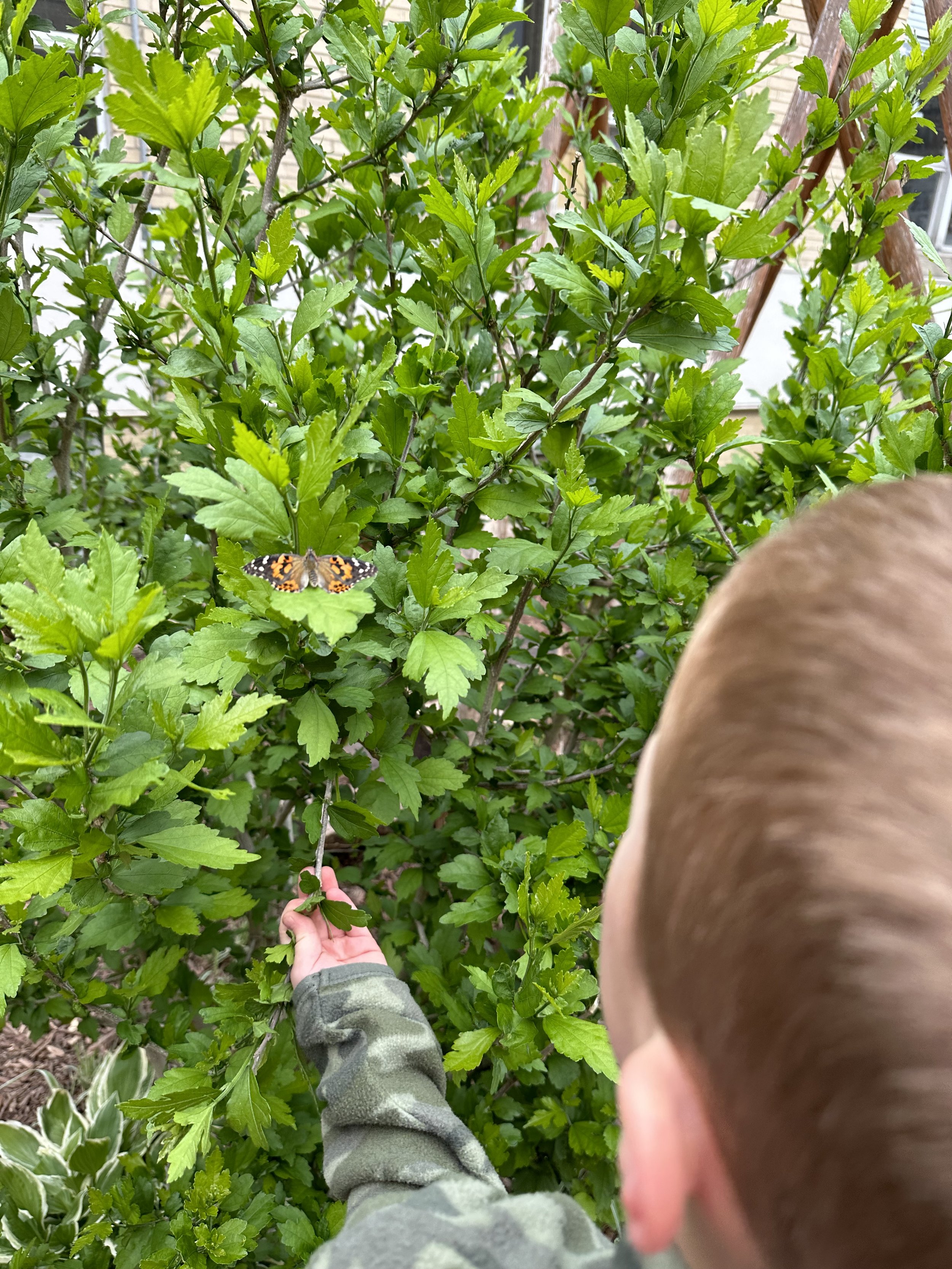
...finally, we then release them into the world!

Our thermometer and weather graph filled out during morning meeting.

Exploring habitats around the world.
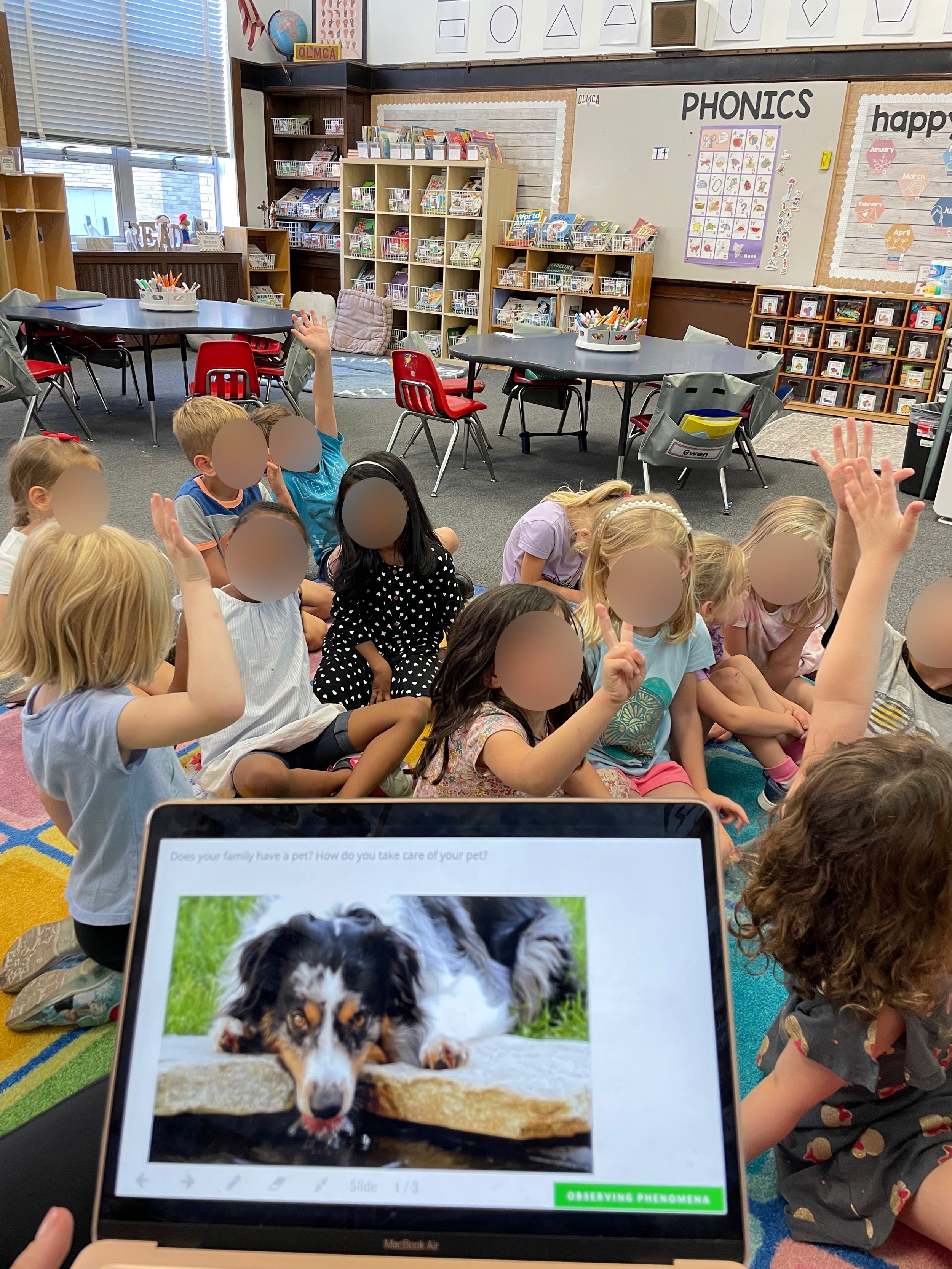
What do animals need to survive?

Looking at what we should provide our pets: food, water, toys, etc.

Reading "We Are What We Eat" by Kristy Hammill...

then learning where food comes from.

Learning that different plants need different levels of sunlight and water.

We water our class plants everyday!

Push vs. Pull
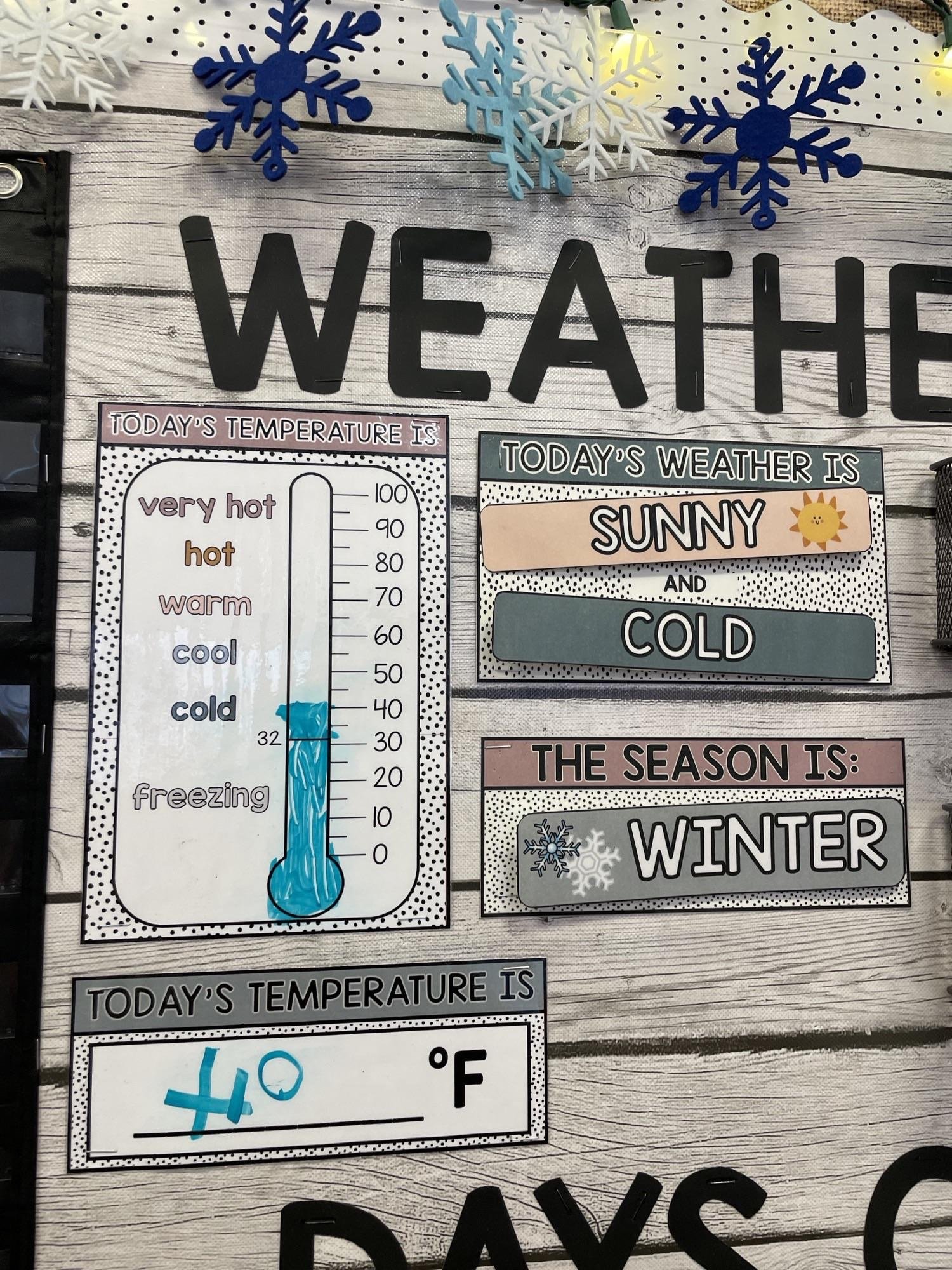
Another example of our morning meeting weather.

Using drawings to help us solve addition word problems.

Playing one of Everyday Math's games: "Monster Squeeze"

Using attribute spinners to find certain shapes.
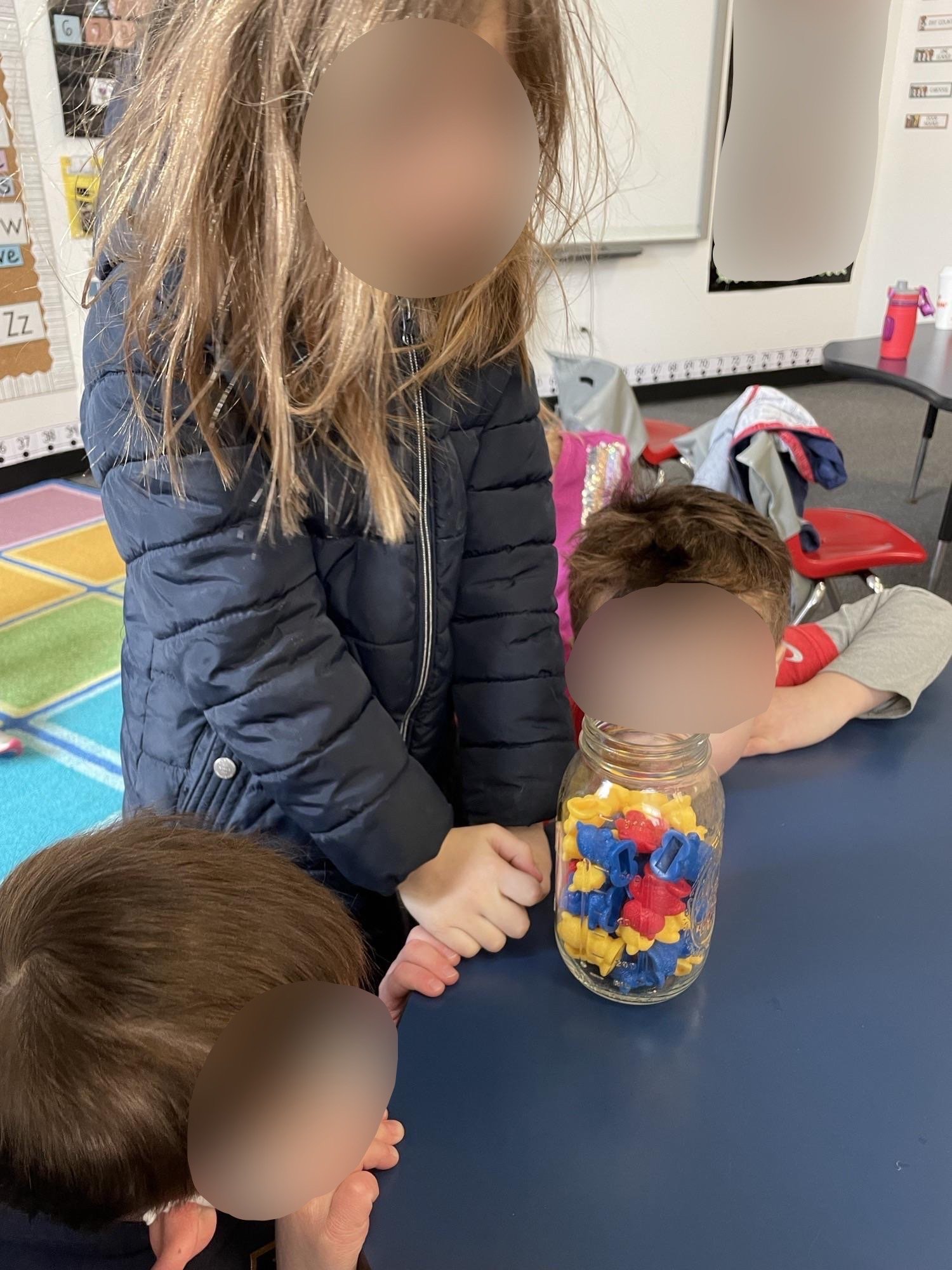
Our estimation jar!

Using calculators to solve story problems.

Students were asked to drag the number representation to the right box.

Learning about function machines.

Using marshmallows and toothpicks to made 3D shapes.
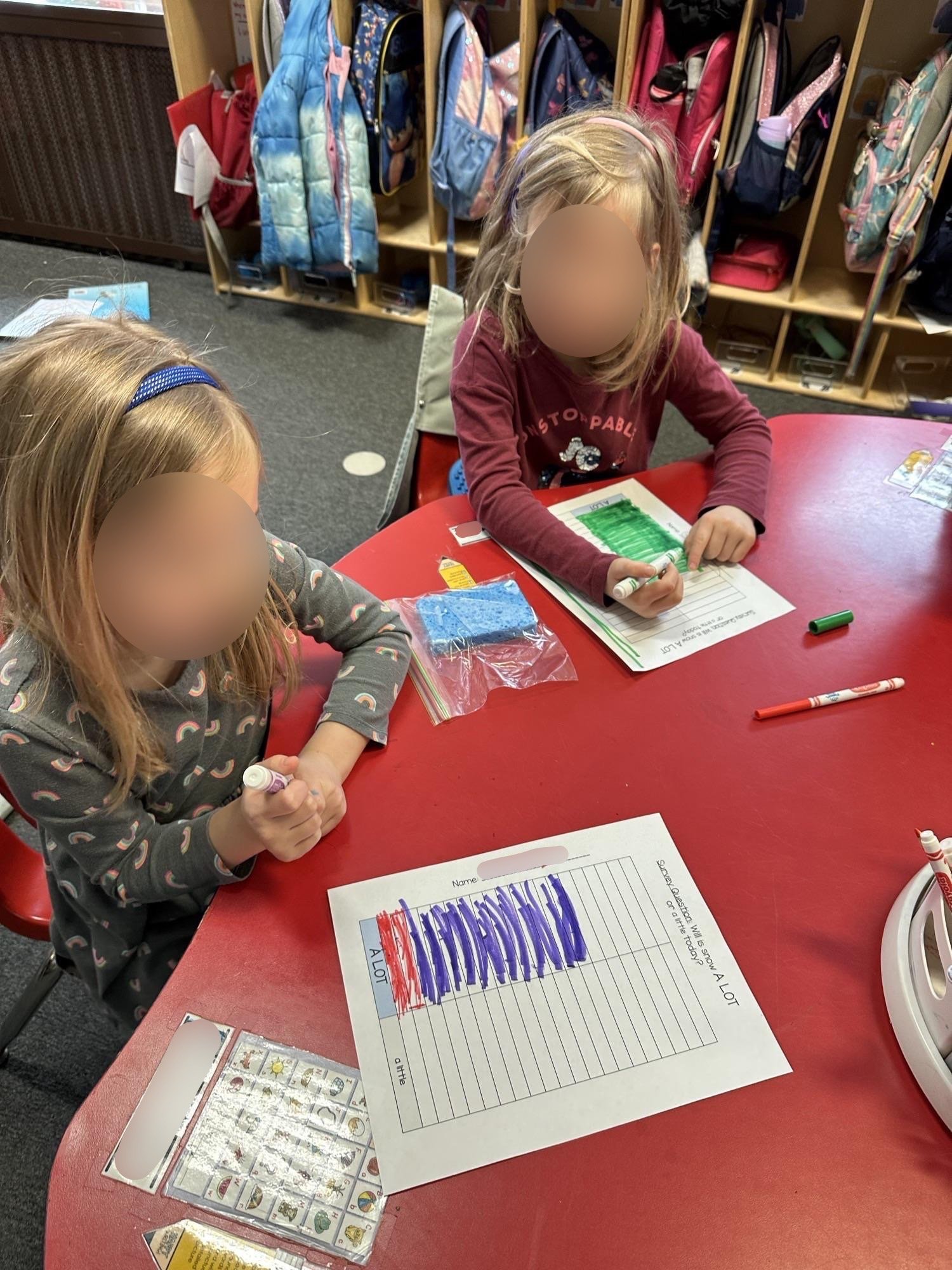
Creating a survey question and graphing the answers.

Gluing real world circles onto a circle!

Learning about time by timing ourselves walking across a room.

Playing "Disappearing/Appearing Train"

Playing "Appearing Train" while writing equations.

Playing "Number Line Hop"

Using shapes to draw a map of our classroom.

Using pattern blocks to make pictures!

My own supplemental unit on money at the end of the school year.

Number matchup!

Using the word wall to help us finding sight words in our books.

Teaching how we can insert ourselves in books...in a fun way!

Lucy Calkins reading superpowers anchor chart.

We use reading "superpowers" to help us read!

Guided reading!

Learning about the beginning, middle, and end of a story using "The Three Billy Goats Gruff" by Paul Galdone.
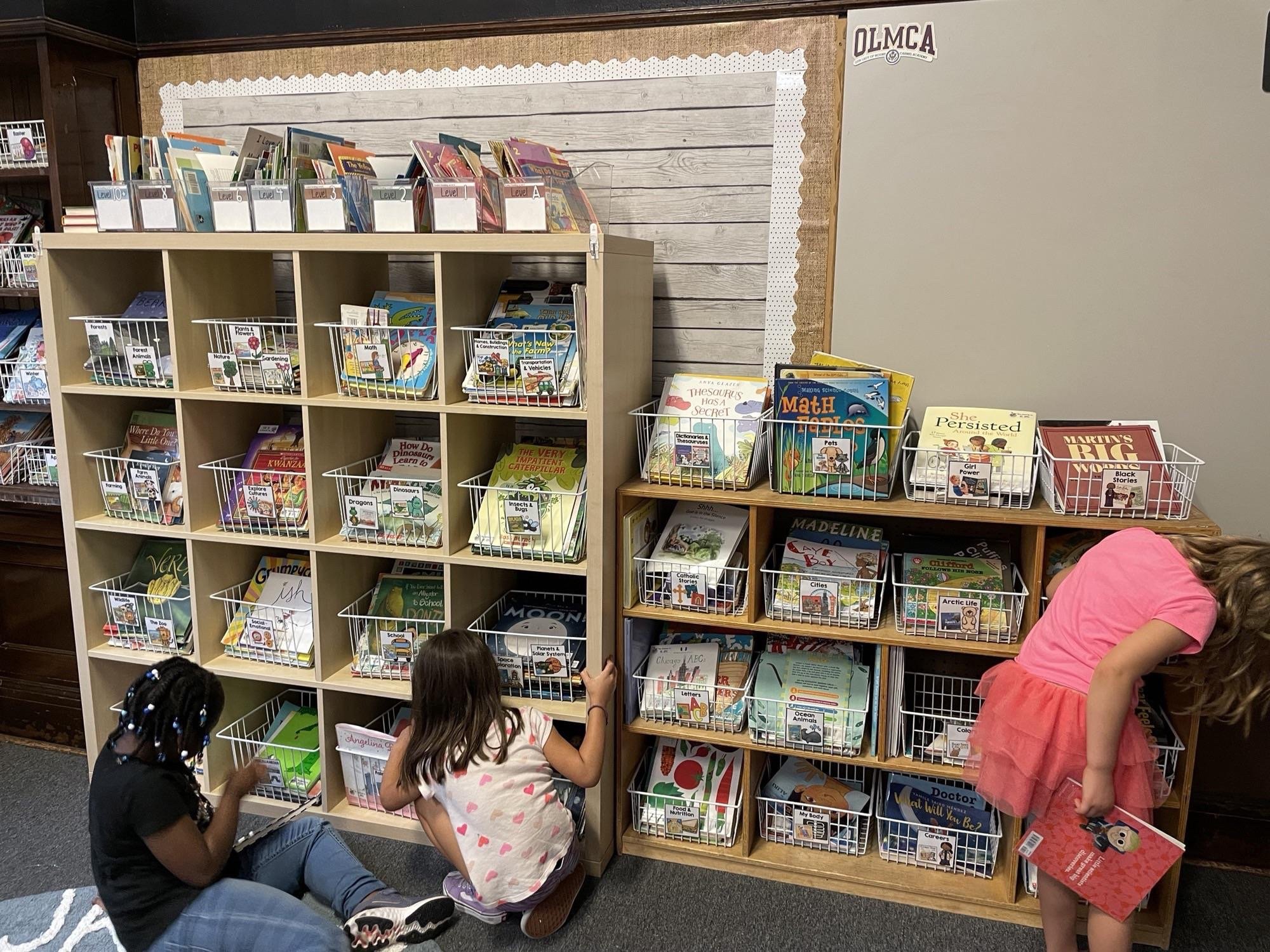
Exploring our library for the first time at the beginning of the year.

Learning how to partner read.

Retelling events helps us start to think deeper about our reading.

Reading with our 3rd grade reading buddies.

Modeling how readers ask questions to think deeper about a book.

Reading emergent readers as a class while I model how to use our reading superpowers.

Finding sight words in books!

Exploring "All About the World Books" - nonfiction books.

Using ABC books to help predict what will happen next and use pictures to help us find sounds.

Exploring leveled readers.

Reading Day forts with the 8th graders.

The library space in my classroom.

Lucy Calkin's Editing Checklist anchor chart.

One page of a student's "How To" book.

A section of an anchor chart I created for story language words - storybook unit.

Practicing labeling pictures before doing it in our own books.
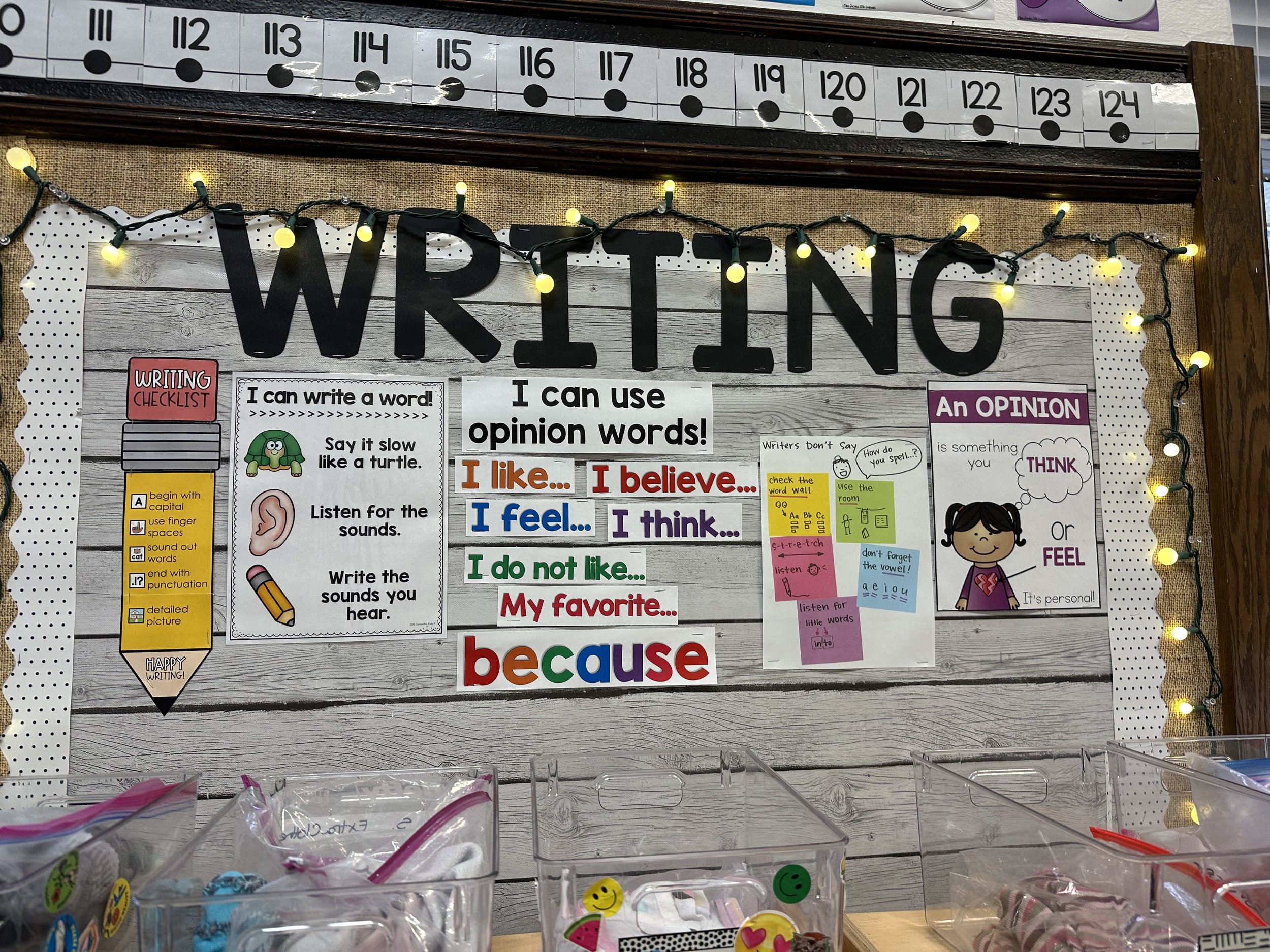
My supplemental writing anchor charts for opinion writing.

Planning out our "How To" books on a page I created before writing our final draft.

Practicing writing with pre-dawn pictures from Lucy Calkins.

We always shared our writing work in a special publishing celebration.

Using speech bubbles!
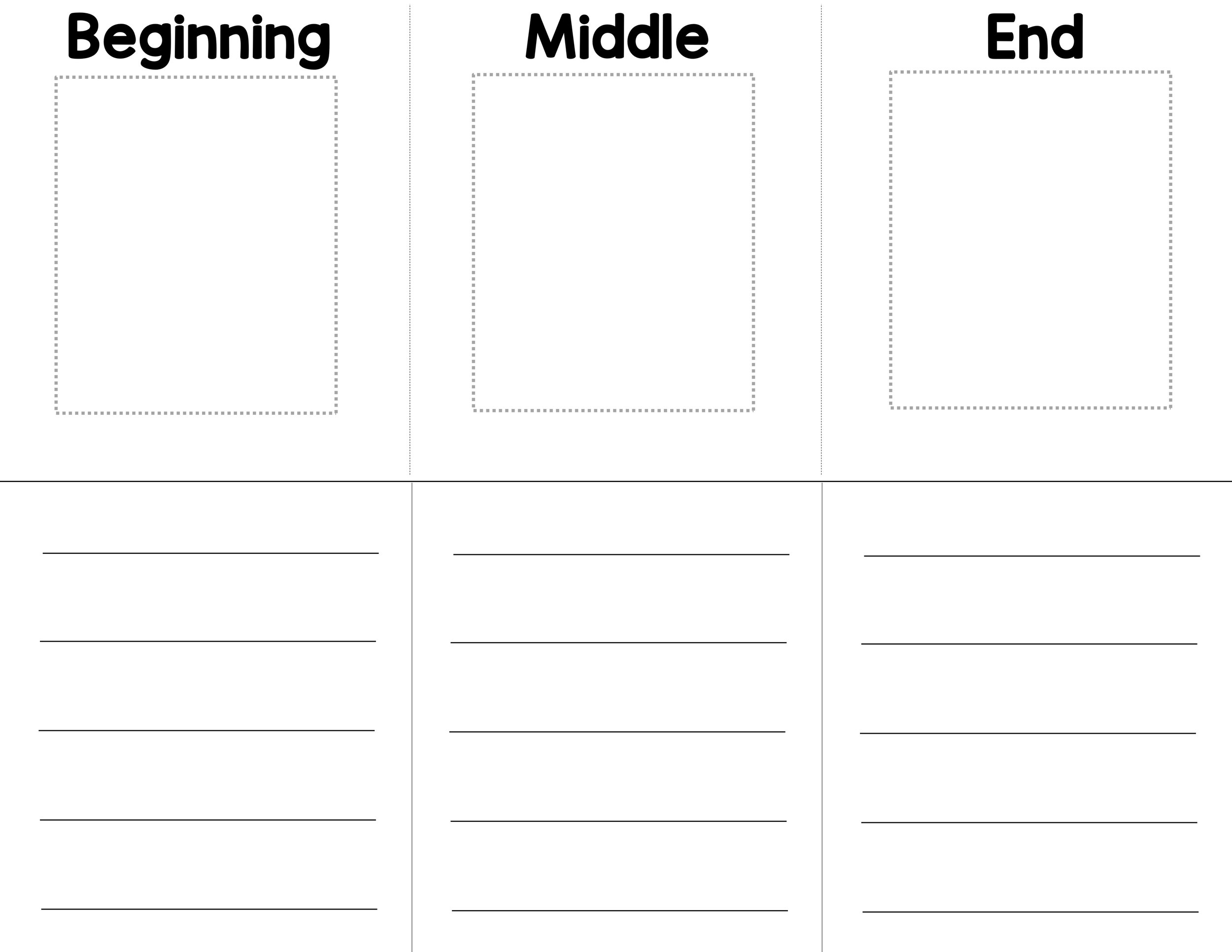
The planning page I created for our storybooks.

Using dry erase sleeves to practice writing CVC words.

Finding items that start with the /s/ sound.

Sorting the difference between lowercase b and d.

Sight word fly swatter!

Playing memory with sight words.

Sight word trees near the holidays!

An example of a Lucy Calkins anchor chart.
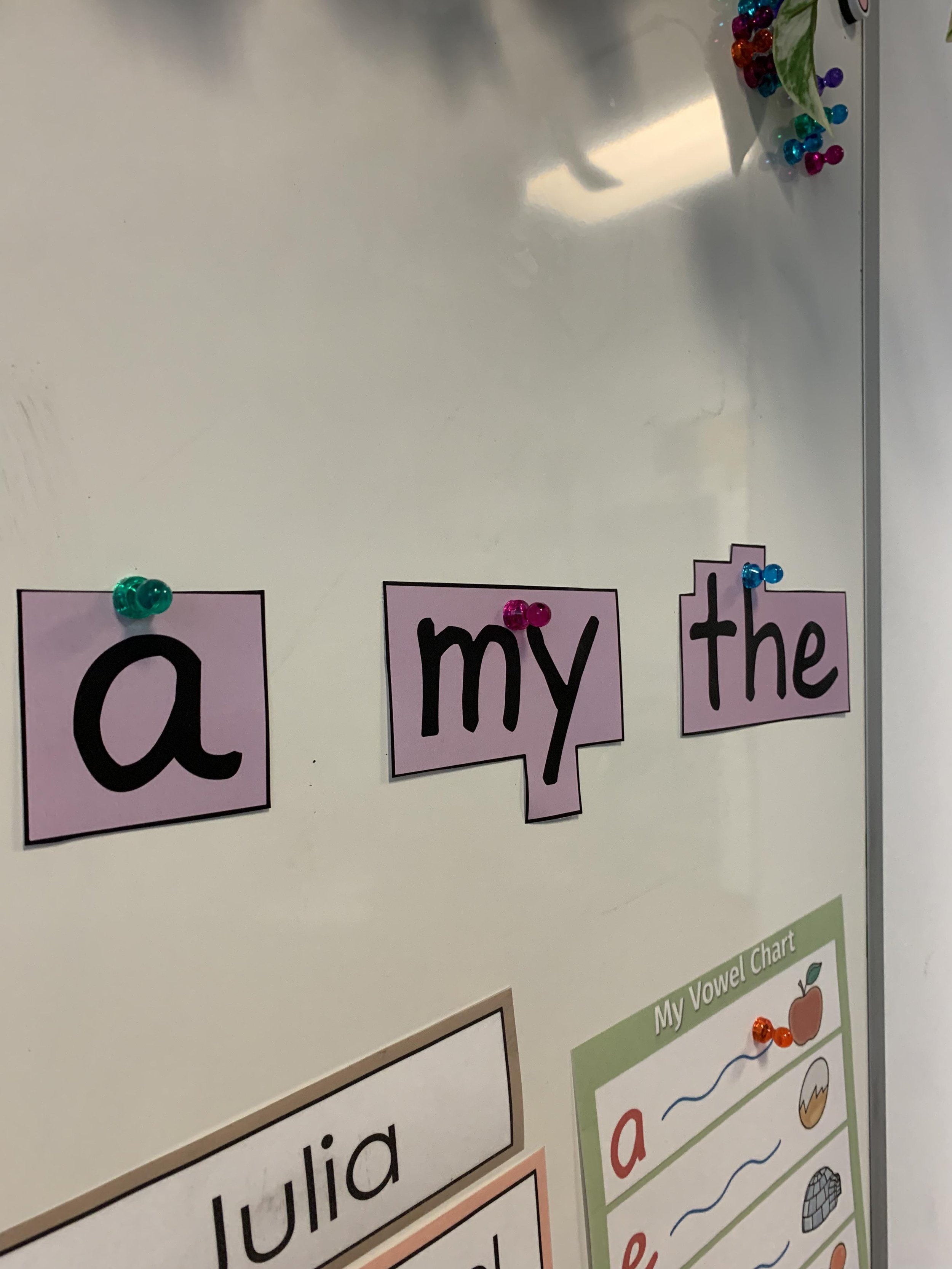
Our first "snap" words of the year!

Writing CVC words that start with digraphs in elkonin boxes.

What starts with the /n/ sound?

Sorting items by long and short O.

Learning the signs for each letter of the alphabet.
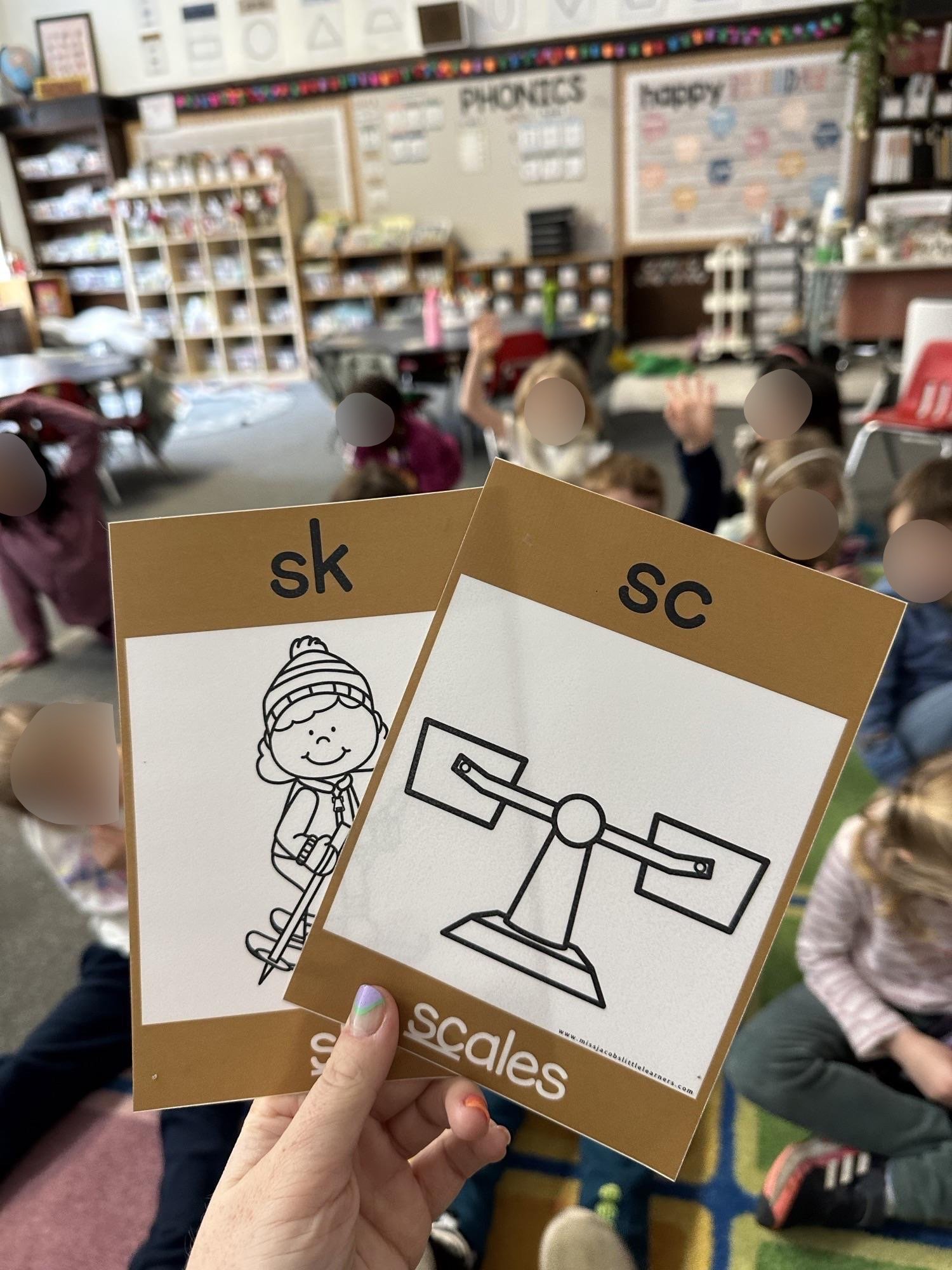
Learning S blends!

Creating our own digraph and blends chart.

Sorting items by ending sound.

Community helpers bingo!

How can I solve problems with friends?

Depicting what it looks like when we are sad.

Looking at different United States symbols.

Learning about how families are similar and different.

We created family portraits and compared our families.

Drawing how we solve problems with friends in a healthy way.

Exploring our family's origins before they came to the United States.

How does it feel to have hurt feelings?

Reading "What Does It Mean To Be American?" by Elad Yoran and Rana DiOrio.
I also supplemented the TCI curriculum with my own lessons.

For Holi, we explored the colorful tradition of throwing paint by creating watercolor paintings.

For our school's cultural fair week, our school studied and celebrated Ukraine. We created Q-Tip paintings of the Ukrainian flag.
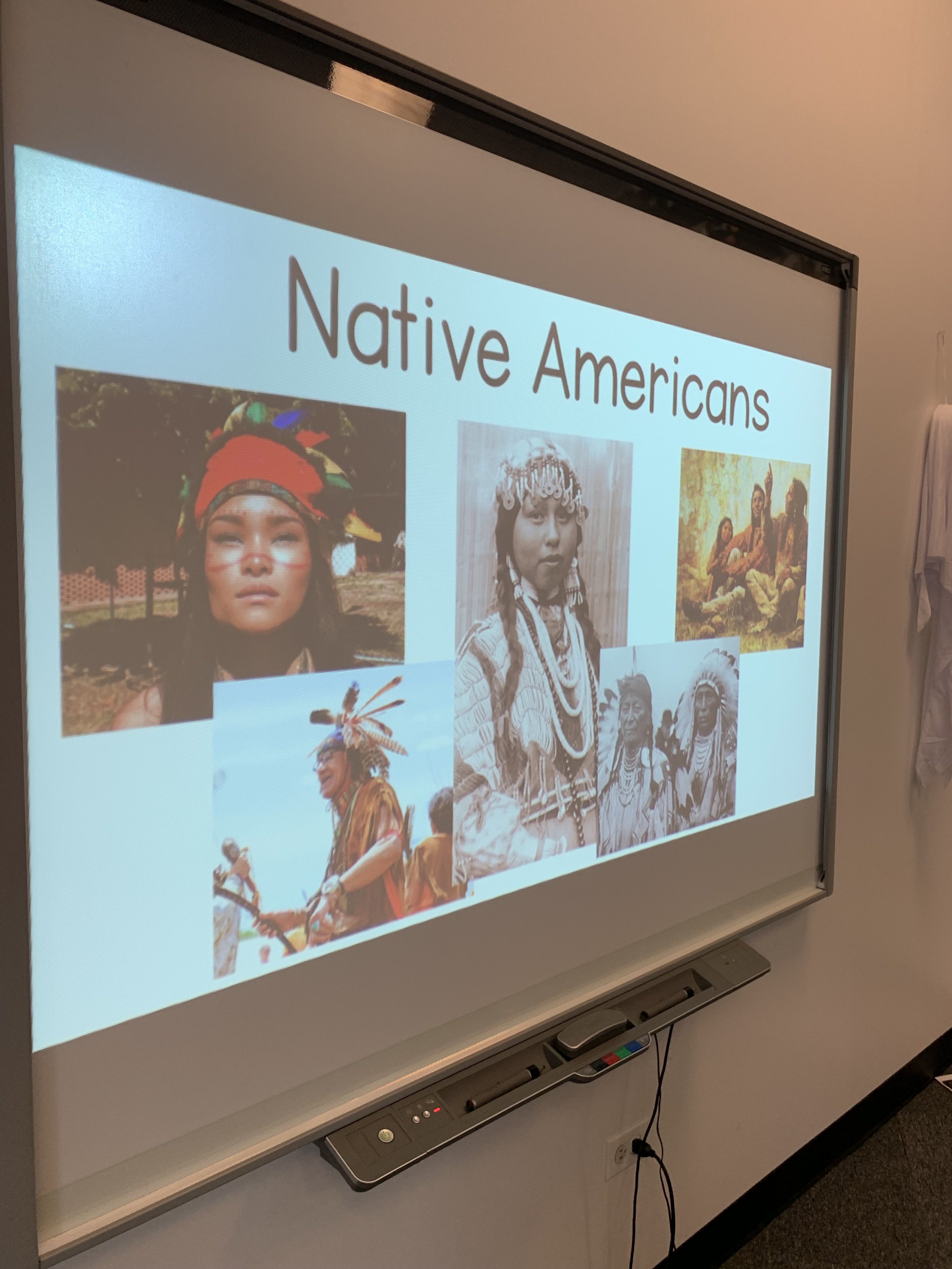
For Indigenous Peoples' Day, students first learned the history of Indigenous People (Native Americans)...

...students looked at various indigenous nations...

...then looked at the culture of different indigenous nations by...

..looking at pictures of people and artifacts from today and the past...

...we also read a book on Sacagawea.

For MLK day, we explored who MLK was and how he impacted our world today.

For Lunar New Year, we read "Grumpy New Year" by Katrina Moore...

...we watched a Chinese dragon in a parade..

...then we created some versions of our own.

Skeletons we made after learning about Día De Los Muertos.
Reward System
In my kindergarten classroom, I created a point system. Students were rewarded for positive behavior exhibited throughout the day. See the slideshow below for examples of rewarded behaviors, the point system, and examples of prizes earned every 20 points!



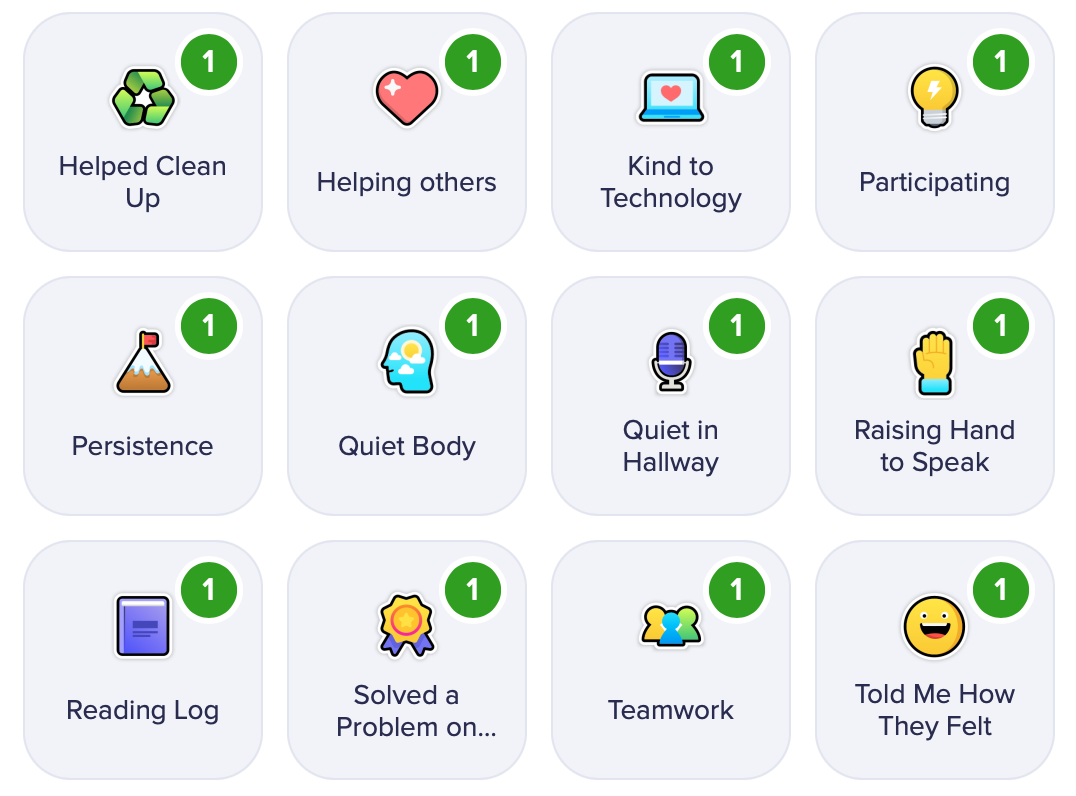
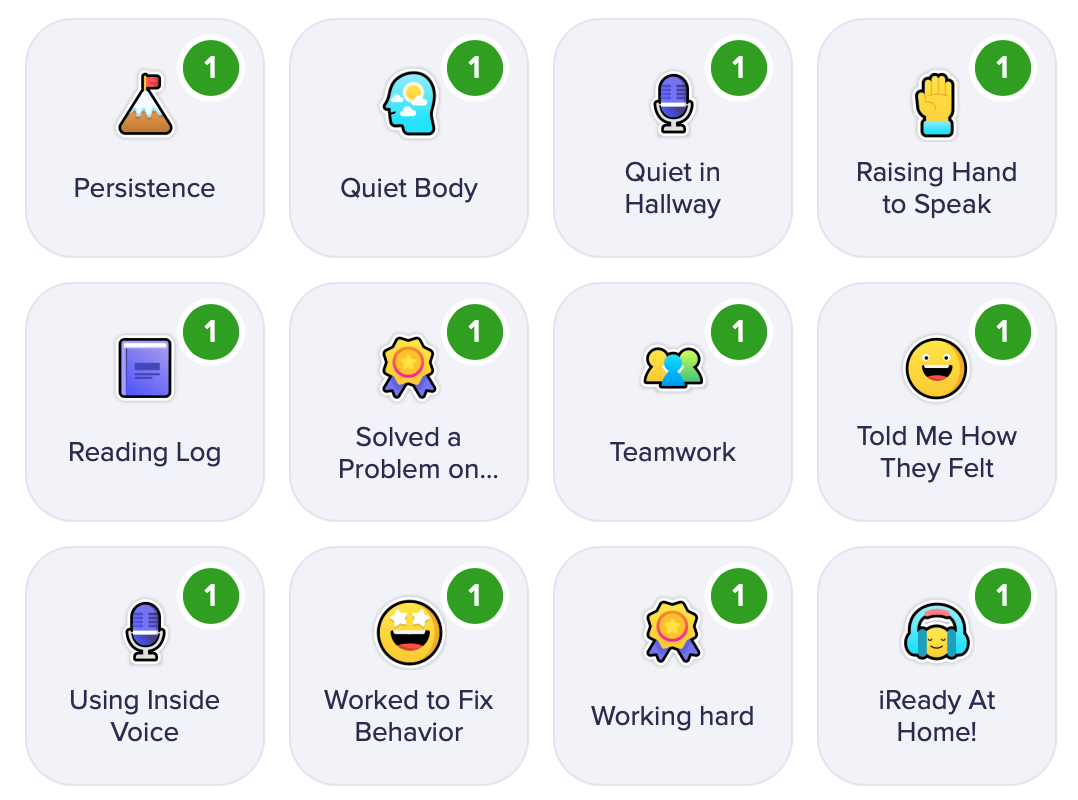

Postive Incentive Charts
To encourage my students to try their best, I had visual charts for students to color in whenever they passed a lesson. Whenever they all filled up a sheet, the class got a reward such as an extra recess, pizza party, game time, etc..
Center Time
Once a day, I have students rotate or choose instructional center time. During this time children can explore math, reading, phonics, and writing by themselves or in groups. I use this time to monitor students’ center time or do one-on-one or small group instruction.
